 John Mata Jr.
.
April 20, 2025
.
Features
.
John Mata Jr.
.
April 20, 2025
.
Features
.
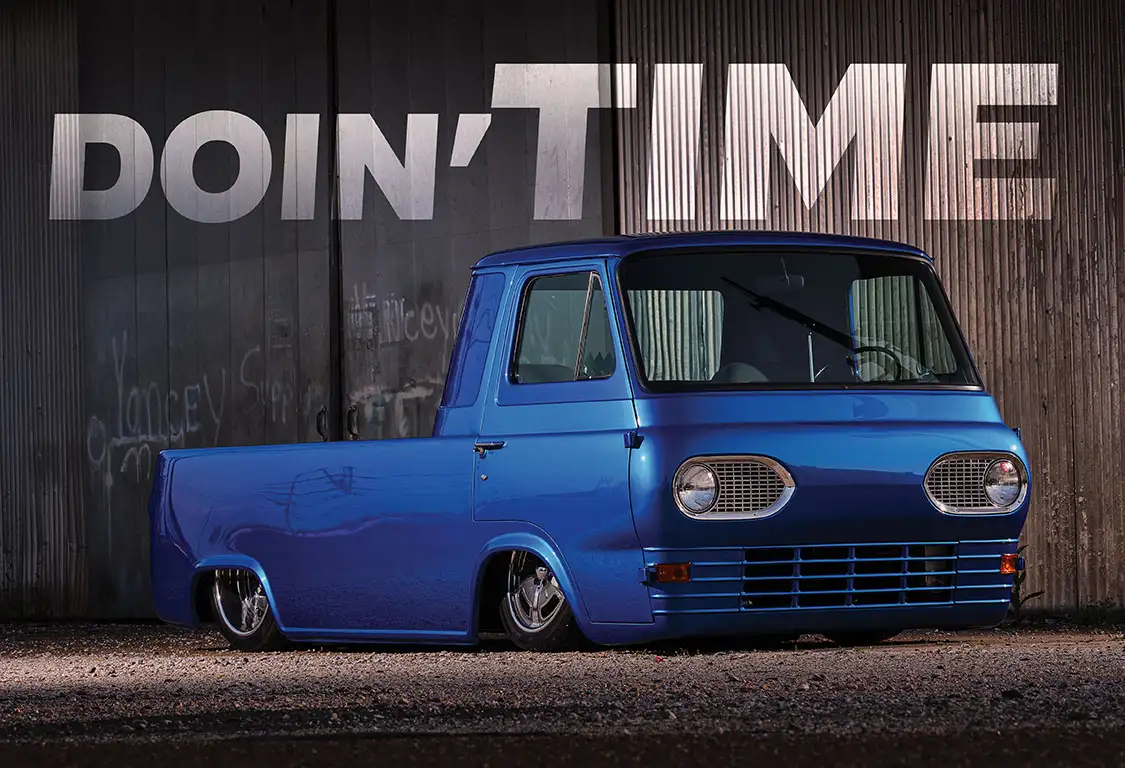
There are fewer things more influential for a pre-teenage kid than having a dad who takes him out to car shows on a regular basis. Shallon Broussard of Carencro, Louisiana, was only 12 years old when his pops told him to start looking for some kind of classic vehicle that they could build to have ready by the time he got his license.


“With that in mind, I really started keeping my eyes peeled while we were out at shows,” Shallon says. “Then one day, I saw the exact truck I wanted! It was exciting to have narrowed the selection down to one specific model.
Even though the completion of this Econoline is roughly seven years overdue, the guys still couldn’t be happier with the outcome.


“I had spotted a ’60s Ford Econoline truck at a show and knew instantly that was the truck I wanted to build,” Shallon adds.
Of course, the first thing my dad asked me was, ‘You like that ugly thing?!’ I did like it—a lot. It was just very different from a lot of other trucks I had seen up until that point, and the one I spotted at the show was done up very nice, which was a huge inspiration right away.”

Luckily, Shallon’s dad Shawn knew of an Econoline pickup in their hometown that had been sitting in the same spot of some guy’s yard for years. The next Monday after that fateful car show, the guys took a drive after school to inquire about purchasing the old Ford.

“Come to find out, the guy was just using the truck to store his grandkids’ old toys,” Shallon admits. “It was full of stuff inside the cab and the bed, but from what we could see, there were only a few rust spots and wasn’t in bad shape considering it had been sitting out for so long.”

Needless to say, the man wasn’t opposed to selling his old truck, and just like that, the Broussard boys had a brand new project in front of them.
Read More: Ultimate Parts and Products Roundup for Classic and Modern Ford Trucks
The Econoline was taken directly to Shawn’s shop, Shawn’s Auto Body, where the guys, along with Cody Stoute, a fabricator working at the shop, started building some kind of plan for it.

“Cody played a huge role in the build,” Shallon says. “He had worked with my dad for a while, and eventually started his own shop in conjunction with my dad’s business called Popeye’s Rod Shop. He really has become a part of our family and my best friend over the years. Cody is the major reason why the Econoline ended up as cool as it did.”

Now, the timeline for the build process was to have the truck done and ready to drive by the time Shallon turned 16, which was still almost a full four years out from that beginning point.
Unfortunately, things don’t always work out as planned, and the truck’s eventual 11-year build process is proof of that. The Econoline project would get pushed to the side quite often to allow the guys to work on paying customer work as well as to focus on the Broussards’ busy drag racing schedule.
Shallon even had time in between this period to buy and mildly build a ’69 C10, drive it around for a few years and sell it off before the Ford had been completed. The Econoline was never forgotten about, however, no matter how many times it was delayed.

In the years the Ford was in the shop, Cody built a full custom chassis for the Econoline complete with all the top shelf air-ride suspension components he could throw at it.
Since there really are no readymade kits for these trucks, he felt it best to start from scratch in order to gain the ideal ride height with the best ride quality possible. Aside from the full Air Lift Performance 3H air management system he added, Cody also fitted the frame with a Mustang II front clip and a 2-link for the rear end.
Since the guys weren’t interested in going overboard with the wheel size, a modest set of 18-inch Intro Flagstaff wheels now give the Ford an updated yet old school appearance to round out the new chassis setup.
A Chevy 327c.i. V-8 mill was then selected and built up to plant onto the Ford’s new frame. The engine was completely overhauled, decked out with some choice performance boosting add-ons, and paired with a turbo 350 transmission for a neatly packaged, ultra reliable powertrain combination.

With the Econoline being parked at an auto body shop, it was just a matter of time before Shawn could get his hands wrapped around their project truck.
To make the body look a little sleeker, he welded all the body seams before adding some custom touches in the one-off tailgate, wheel tubs and panels enclosing the inside of the bed.
This 1964 Ford Econoline truck had never looked better, and to capitalize on all the expert body work that was invested into the project, Shawn decided to treat the truck’s surface with his own specially mixed PPG Envirobase two-tone blue paint scheme.
The finished product had to have Shawn thinking of retracting all that “ugly” talk before the paint even dried.

The next phase of the build was to transform the interior, and to do that, the guys had already planned on contacting Brent Davison of Sculpt Garage in San Marcos, Texas.
Brent whipped up a set of custom seats, center console and engine cover, and then selected the right material to upholster the entire inside of the cab.
The dash was outfitted with a set of Esquire Series Classic Instrument gauges, and a ’64 Impala steering wheel with a factory horn button to thoroughly class up the cab.
Vintage Air A/C and a Bluetooth stereo system were also incorporated into the build to give Shallon access to all the modern conveniences.

Even though the completion of this ’64 Ford Econoline trucks is roughly seven years overdue, the guys still couldn’t be happier with the outcome.
“The quality time with my dad is something I’ll cherish forever,” says Shallon. “The time we got to spend with Cody has been a blast, and it was great to see the process slowly take shape even through we had to wait longer than expected.”
The truck was finally considered done in February 2021, and Shallon has been busy taking it to shows all year long. He’s been driving the Ford and enjoying it as much as possible with his hectic school schedule, and the forecast calls for more of the same for years to come. You only get one first build, and Shallon plans on making the most of the experience.
Owner
Shallon Broussard – Carencro, LA
1964 Ford Econoline Pickup
Engine/Drivetrain:
Chassis/Suspension:
Wheels & Tires:
Body/Paint:
Interior:
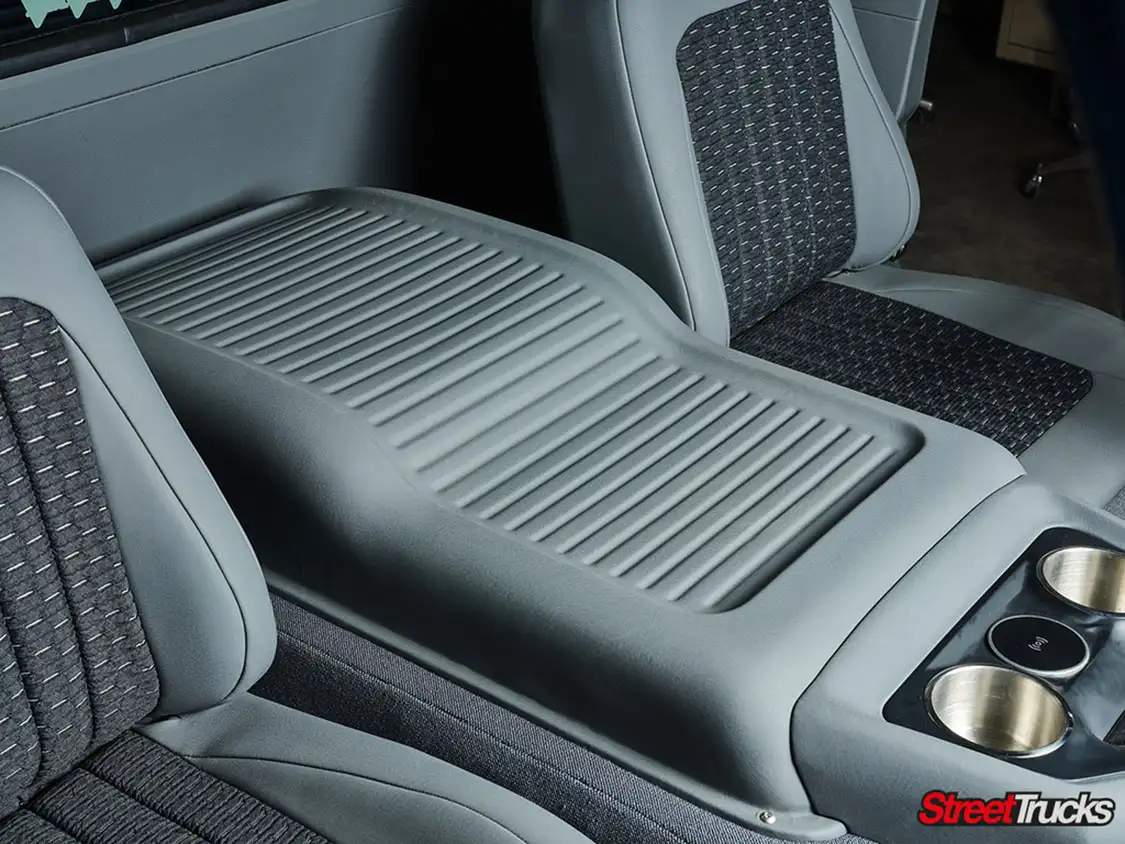

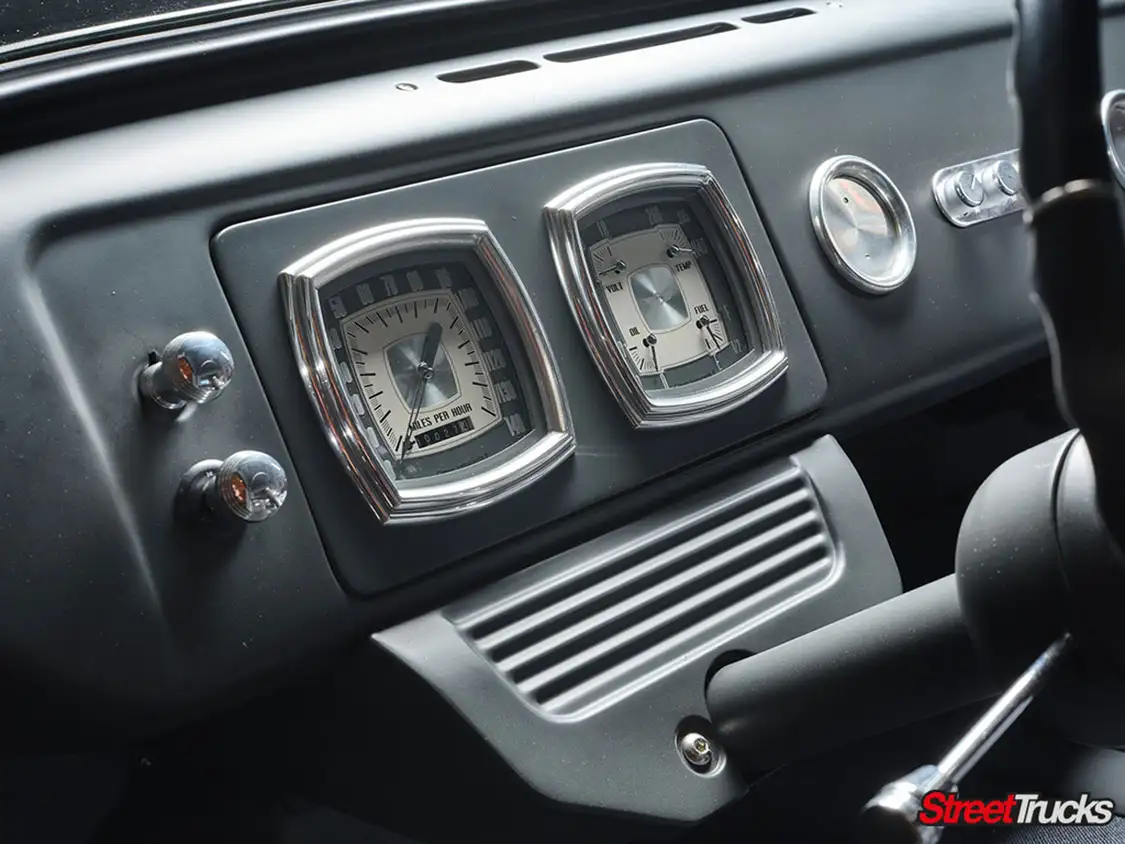
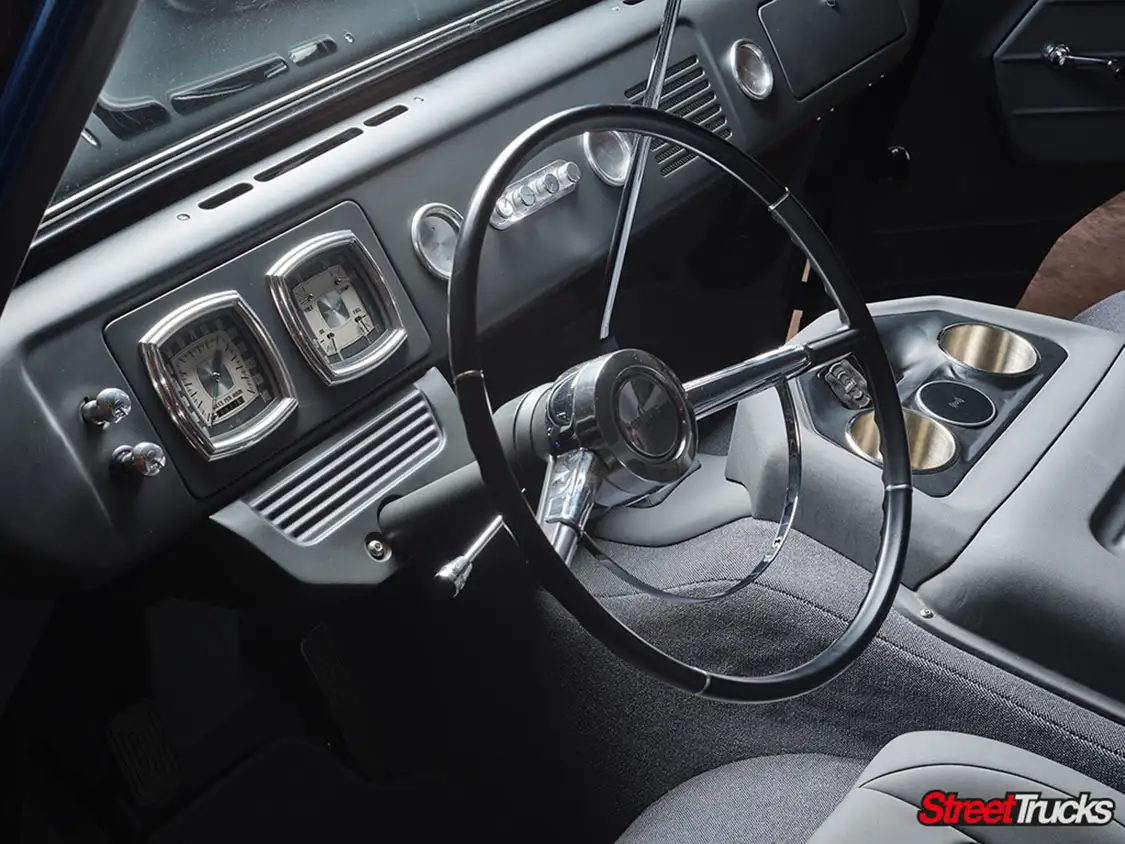
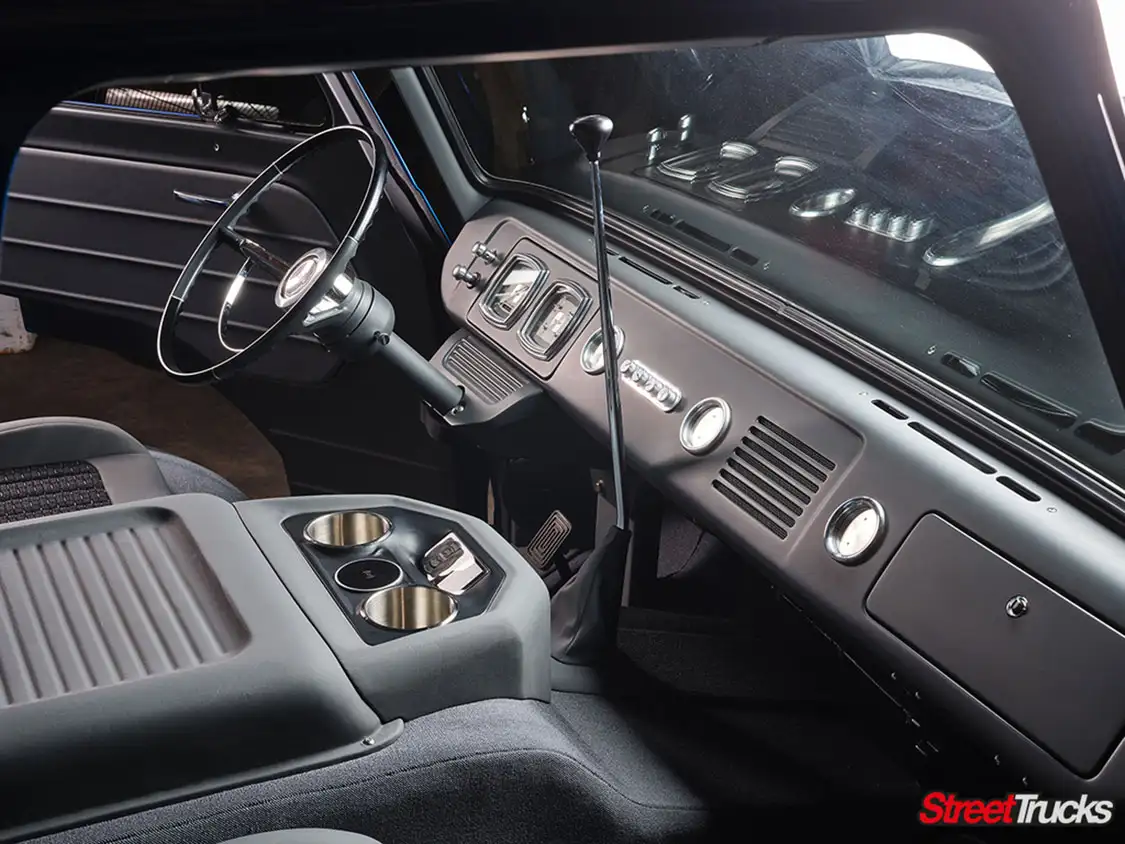
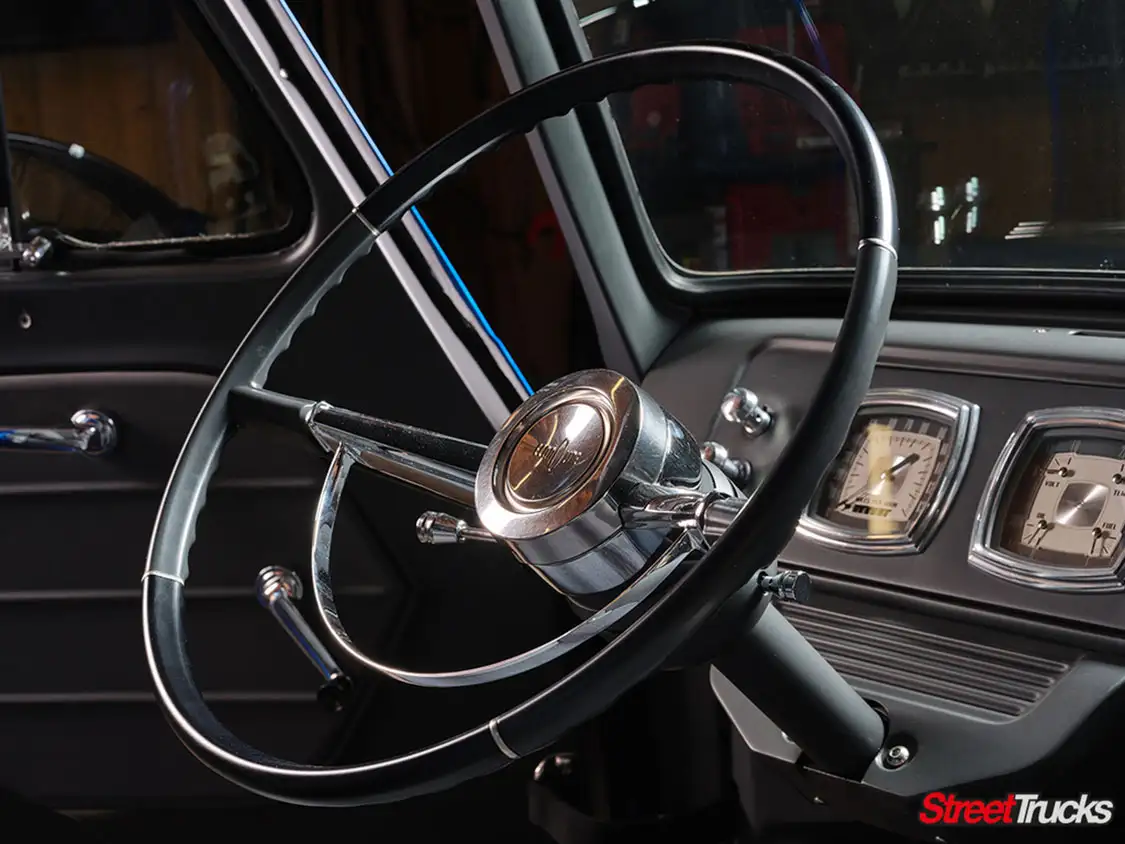
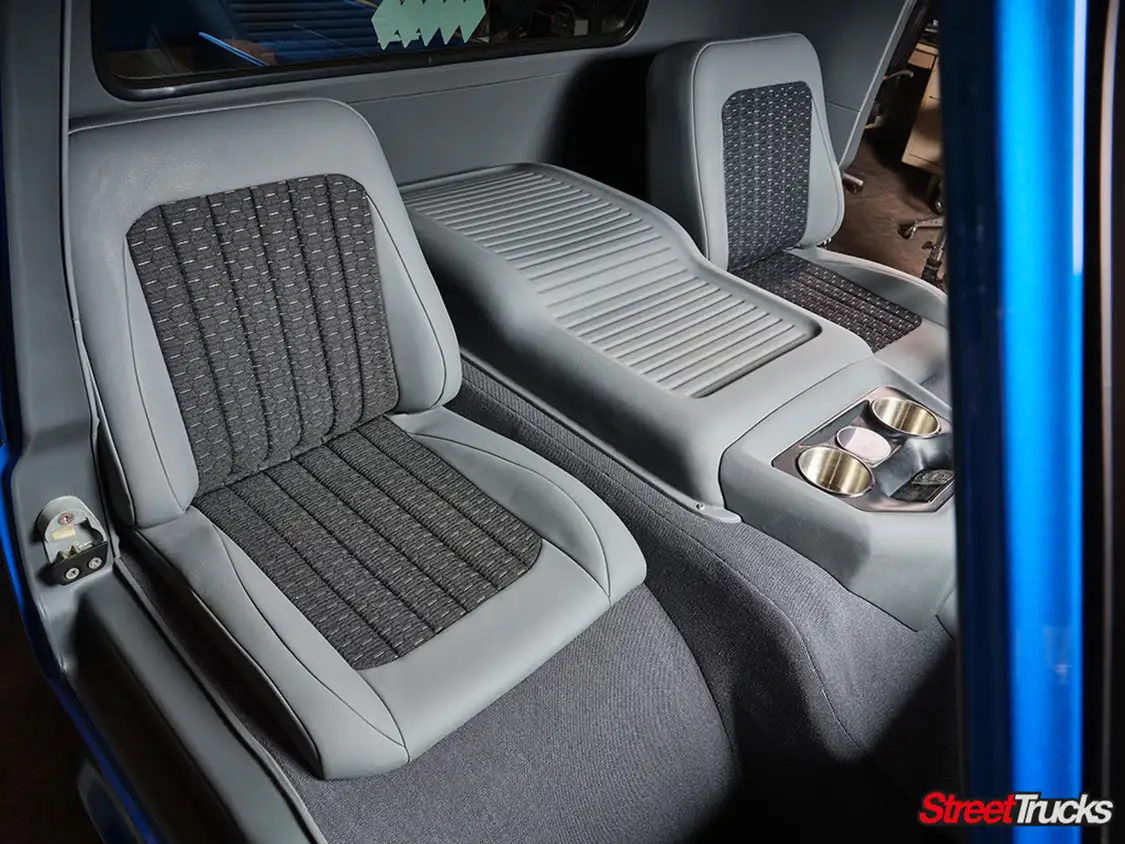
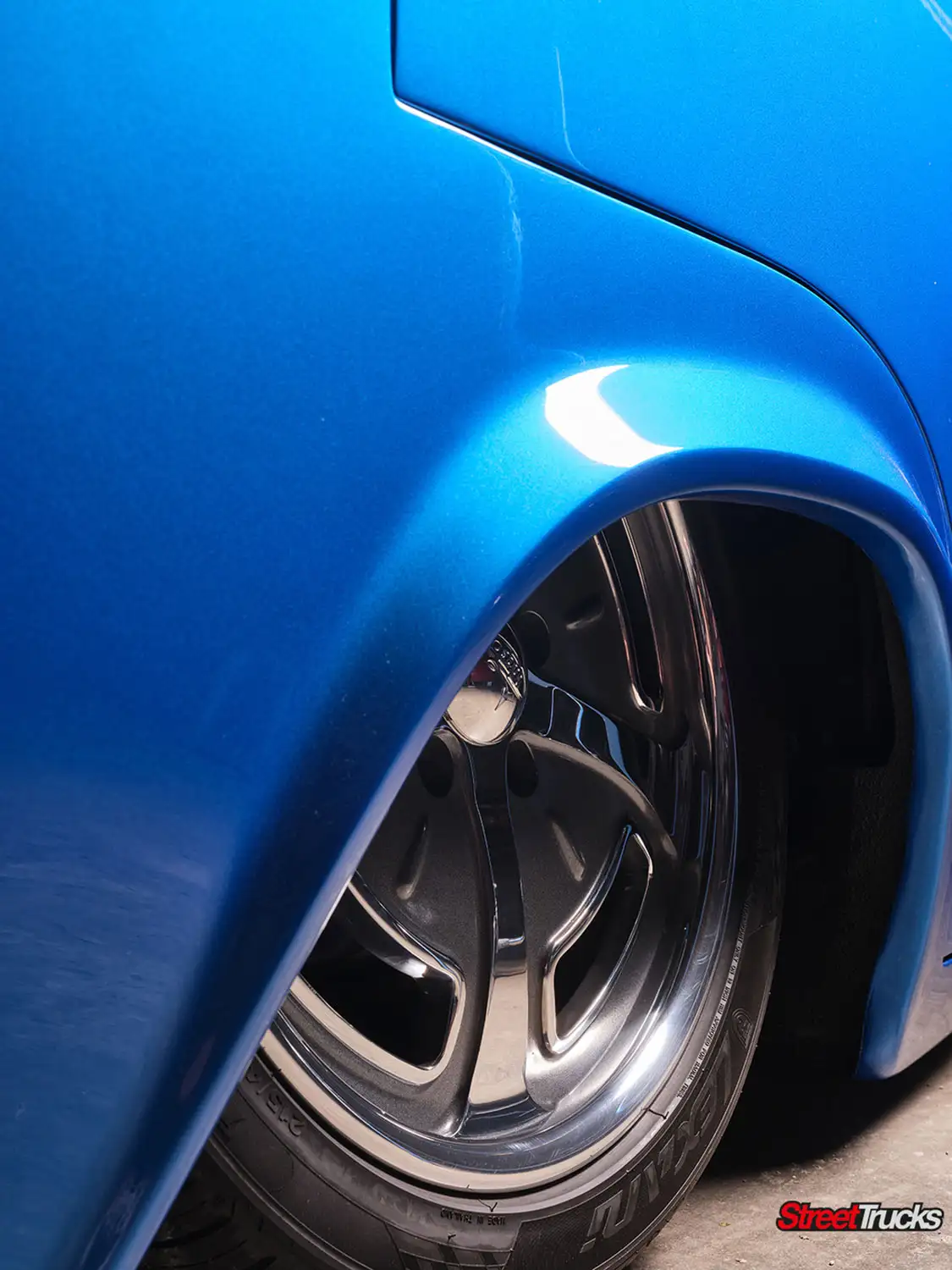
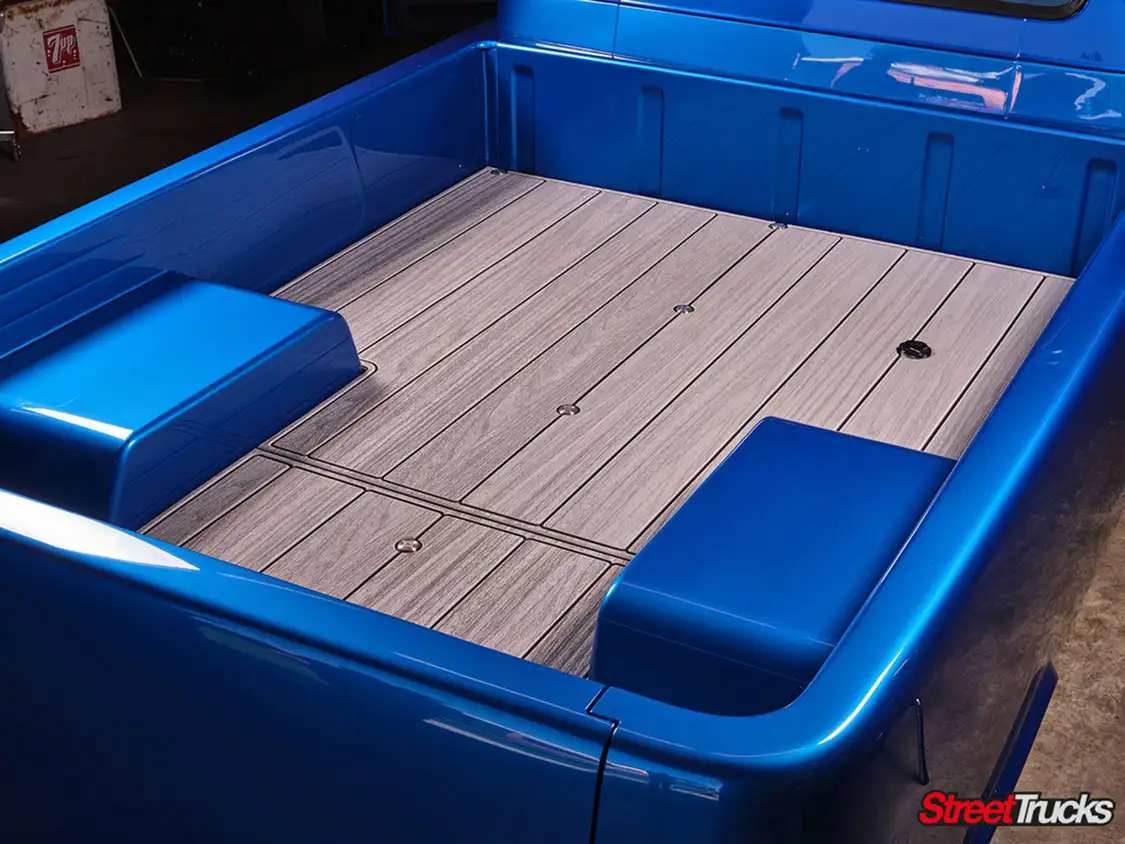



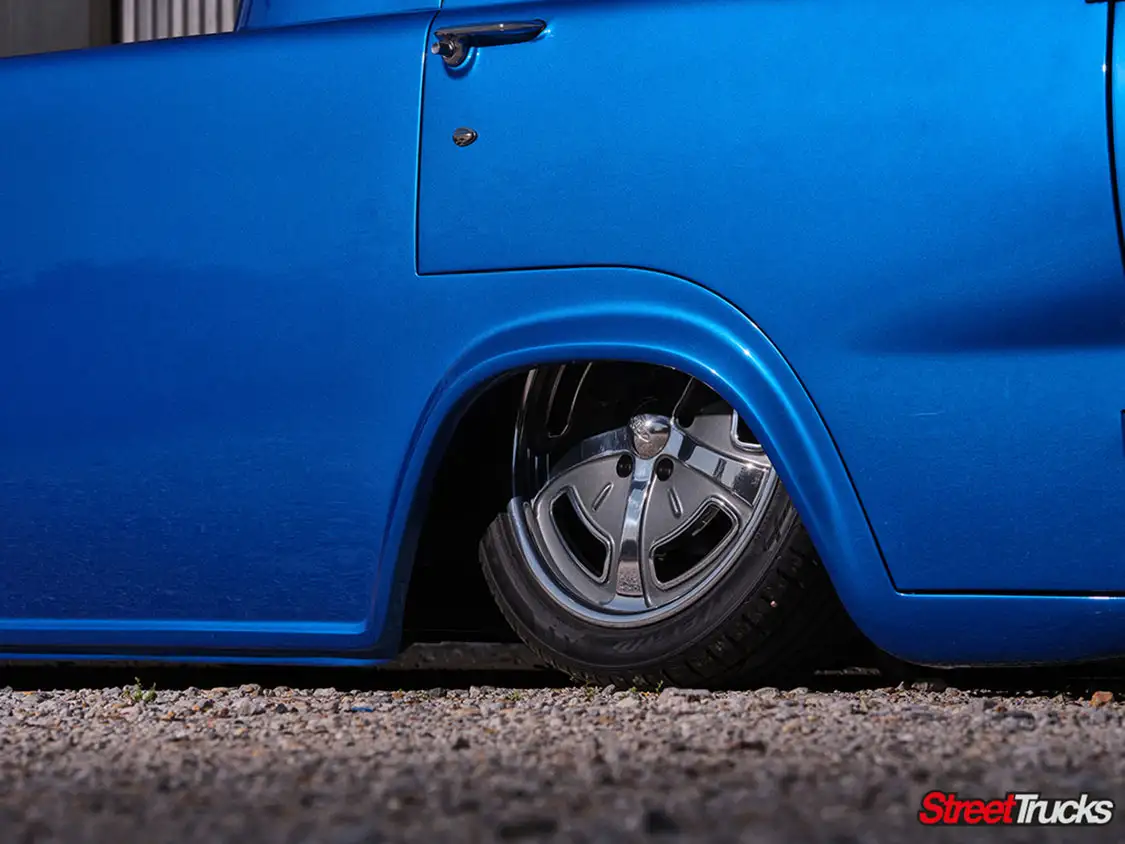
The Ford Econoline Pickup made its debut in 1961 as an innovative spinoff of the first-generation Econoline van. Designed with the cab-over-engine layout, this pickup aimed to offer greater cargo space while maintaining the maneuverability of a smaller vehicle.
Key Milestones:
Design and Impact:
This compact pickup was particularly popular among small business owners and tradespeople for its versatile cargo capacity. Its distinct design set it apart from conventional pickups of its era, leaving a lasting impression on automotive enthusiasts.
Though its production run was relatively short, the Ford Econoline Pickup remains a notable chapter in the history of utility vehicles.
The Ford Econoline Pickup made its debut in 1961 as the truck version of the original Econoline van. Production of this model wrapped up in 1967.
Restoring and modifying Ford Econoline pickups is a popular pastime among enthusiasts, with each project reflecting personal preferences and creativity. Here’s a detailed look at the typical modifications and refurbishments these classic trucks undergo:
Exterior Refinishing
Refinishing the body is a common starting point. Owners often choose bold, eye-catching colors like red, blue, orange, and even two-tone combinations. Adding custom graphics or decals, especially thematic designs like fire department motifs, is also popular. Attention to detail extends to painting the roof or fitting new chrome trims and bumpers to enhance the visual appeal.
Engine Upgrades
Engine swaps are frequent, with enthusiasts opting for more powerful and reliable engines. Among the popular choices are Chevrolet V8 engines, 200ci inline-six units, fuel-injected V6 engines, and even high-power Ford V8s. These upgrades not only boost performance but also add a unique character to the truck.
Transmission Enhancements
To complement engine upgrades, transmissions are also commonly replaced. Three-speed automatic transmissions, such as the C3, and four-speed AOD automatic transmissions are popular choices. These enhance the driving experience and provide better handling.
Brake and Suspension Modifications
Upgrading the braking system often involves installing front disc brakes to improve safety and stopping power. Suspension modifications, including bracing the frame or extending the wheelbase, contribute to a more stable and comfortable ride. Tubbing the rear fender wells is another common mod, allowing for wider wheels.
Interior Refreshment
Interior refurbishments range from reupholstering seats in fabric or leather to full dashboard and panel replacements. Customizations often include painting the dashboard and door panels to match or contrast the exterior color scheme. Some enthusiasts add modern amenities like AM radios or upgraded fuse blocks to enhance functionality.
Wheels and Tires
Owners frequently replace the original wheels with staggered-diameter aftermarket options. Cragar S/S wheels and chrome-finished Boyd Coddington rims are popular choices, known for their aesthetic appeal and performance. The new wheels are often paired with improved tires suited for better handling.
Special Equipment
Additional equipment includes installing sirens, towing mirrors, and custom exhaust systems like Black Jack headers or Super Trap stainless-steel exhausts. These elements not only improve the truck’s functionality but also add to its unique look and sound.
Axles and Differentials
Upgraded rear axles and differentials are common modifications, improving the truck’s power transmission and handling. Limited-slip differentials and high-ratio axles are often chosen for their performance benefits.
By combining these various modifications, owners transform their Ford Econoline pickups into unique, high-performance vehicles that stand out both in appearance and functionality. Each refurbishment showcases the owner’s commitment to preserving the classic charm while incorporating modern advancements.
Ford Econoline Pickups can be categorized into several distinct eras and decades. Here’s a comprehensive breakdown:
These eras represent the evolution of Ford Econoline Pickups from their inception to the current day.
Engines Commonly Found in Modified Ford Econoline Pickups:
Modified Ford Econoline pickups showcase a diverse array of engine configurations, reflecting both creativity and performance enhancements. For instance:
Each of these setups demonstrates the versatility and adaptability of the Ford Econoline platform, making it a favorite among enthusiasts for customization. Whether opting for the raw power of a V8 or the balanced performance of a V6, these pickups continue to captivate and inspire.
The Ford Econoline pickup is a classic vehicle that has seen a variety of engine and transmission configurations over the years. These components are crucial not only to the vehicle’s performance but also significantly influence its market value.
Engine Variants: Power and Performance
Transmission Choices: Shaping the Ride
Enhancements and Modifications: Additions That Matter
Conclusion: Value Through Variety
In summary, the blend of engine types and transmissions in Ford Econoline pickups affects both performance and financial value. High-performance engines paired with efficient transmissions can cater to a wide range of preferences, from collectors seeking authentic restorations to drivers interested in modified powerhouses.
Enhancements, such as advanced brakes and stylish interiors, further accentuate the vehicle’s market position, making the Econoline a versatile and worthwhile investment.
By understanding these factors, prospective buyers and sellers can better appreciate the nuances that contribute to the allure of this iconic pickup.
The Ford Econoline pickups, spanning from the early 1960s through the late 1960s, exhibit a fascinating array of color schemes and interior features that reflect both the trends of their eras and the personal tastes of their owners.
Vibrant and Bold Exterior Colors
Interior Concepts Ranging from Functional to Refined
Versatile Modifications and Additional Features
The Ford Econoline pickups, with their striking color palettes and tailored interiors, continue to capture the imagination of collectors and enthusiasts alike, reflecting a blend of classic charm and adaptable design.
Suspension modifications include lowered suspensions, the addition of front disc brakes, and the use of custom air suspension systems. Some trucks have had their wheelbases extended or the rear fender wells tubbed for a different stance.
The modified Econolines have been equipped with several transmission types, including three-speed manual transmissions, three-speed automatic transmissions, and four-speed AOD automatic transmissions.
The Econoline pickups have featured a variety of engine swaps, including the addition of Chevrolet V8s like the 350ci and Ford V8s such as the 289ci and 351ci. Inline-six engines, including a 240ci and a 200ci, have also been used.
Share Link